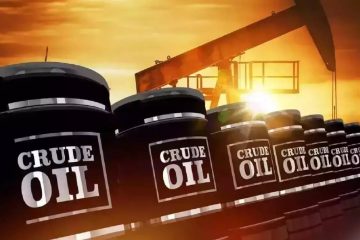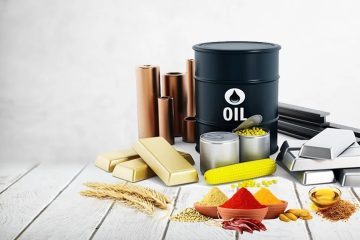The oil market’s shock absorbers are nearly gone

The world was awash in crude oil just two years ago. Now there’s barely enough to meet the unquenchable thirst for energy.
Faced with rapidly rising prices and sanctions on Iran, Saudi Arabia agreed to raise production to a record level. Russia is chipping in, too.
But even Saudi Arabia, the world’s largest oil exporter, can only pump so much. Unleashing output now leaves the kindgom with less firepower to respond to future shortages.
“There’s very little room for error,” said Matt Sallee, portfolio manager at the energy investment firm Tortoise.
How much additional oil countries can quickly and sustainably produce is known in the industry as spare capacity. When spare capacity is high, such as during the oil price crash that began in late 2014, it acts as a shock absorber. Prices barely respond to threats to oil supply, like war in the Middle East, because countries can easily pump more crude.
But that cushion has shrunk considerably in recent months because of a slew of outages in Libya, Canada and especially crisis-riddled Venezuela. And now OPEC and Russia are pumping more to respond to President Donald Trump’s tough sanctions on Iran, the world’s fifth-largest oil producer.
“After replacing Iranian volumes, there will be essentially no spare capacity left,” Michael Wittner, global head of oil research at Société Générale, wrote in a report on Monday. “This would be extremely bullish.”
It means that even minor disruptions in oil-producing countries can cause prices to spike.
Related: Trump asks Saudi Arabia to pump more
Trump has taken an even tougher stance on Iran than Wall Street anticipated. The administration has warned nations to eliminate their imports of Iranian crude or face penalties from Washington.
Wittner now expects Iran’s oil exports to be slashed by up to 1.3 million barrels per day. That’s up dramatically from his previous estimate of just 400,000 barrels.
“If the Saudis and others need to increase output to make up for the forthcoming cuts in flows from Iran, there is barely enough spare capacity to do the job,” Wittner wrote.
This thinking helps explain why oil prices have ratcheted even higher since OPEC and Russia agreed on June 22 to pump more crude. US oil has spiked to $ 74, the highest in nearly four years. Crude was at just $ 66 before the OPEC meeting began.
To be sure, oil prices could just as quickly collapse if the booming world economy suddenly falters or another problem emerges. And at some point, high prices will start eating into demand for oil.
Related: Growing pains across America’s biggest oilfield
Still, Trump was worried enough to ask Saudi Arabia late last month to increase production. It makes sense Trump turned to Saudi Arabia. It’s widely believed to be the only country with enough firepower to quickly ease oil shortages.
But how much more the kingdom can do is up for debate. Saudi Arabia has reportedly already agreed to pump a record-high 11 million barrels of oil per day in July.
Saudi Arabia’s ceiling could be 11.5 million barrels per day within 30 days, Société Générale estimates. Saudi Aramco, the state-run oil giant, has said that it could eventually get to 12 million barrels per day.
“If we lose 1 million barrels per day from Iran, does Saudi Arabia have the capacity to make up the shortfall? That’s an unanswered question at this point,” said Ben Cook, portfolio manager at energy investment firm BP Capital Fund Advisors.
Other major oil producers are also reaching their limits.
As of May, OPEC members Kuwait and the United Arab Emirates were only able to pump another 550,000 barrels per day combined, according to Société Générale.
Russia is the world’s leading oil producer. But even Russia may only be able to pump another 100,000 barrels per day, Société Générale said.
“The bottom line is that spare capacity is getting tight,” Wittner wrote, “and that is bullish.”
Related: What the heck is going on with oil prices?
Of course, OPEC isn’t the only game in town — as the US shale oil boom has made abundantly clear. Shale producers in the United States pumped so much leading up to 2014 that prices eventually crashed.
The US shale boom is back on track, led by skyrocketing activity in the Permian Basin of West Texas. However, growing pains have emerged in the Permian Basin. Shortages of pipeline and talented workers are limiting output.
“The Permian Basin can’t just grow unabated,” Cook said.
The other problem: The oil crash forced companies to scrap expensive and time-consuming deepwater projects. Those extra barrels would come in handy now.
“It’s hard to see where supply will come from to meet growing demand,” said Tortoise’s Sallee.






